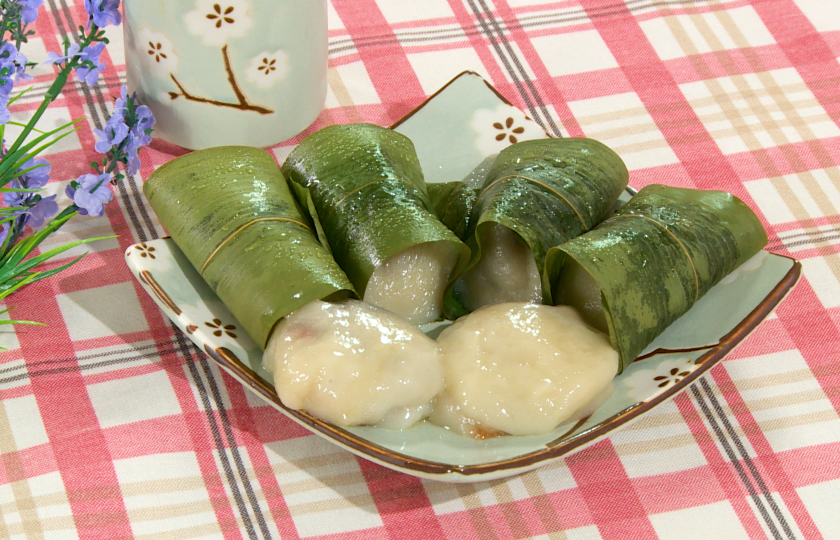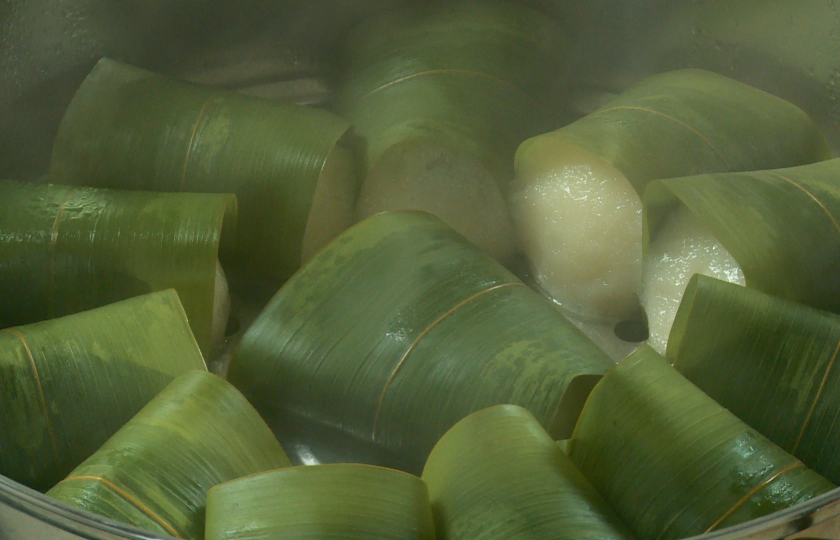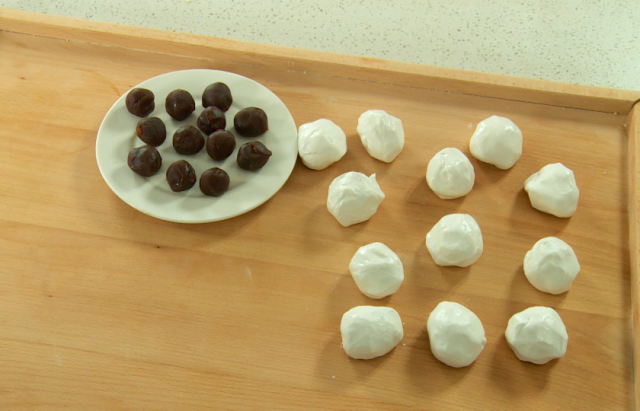Traditional Hakka Tea Cake Recipe


Worried about what to have for breakfast every day? Hakka tea pastries come to the rescue! They can be made in advance and can be eaten after being heated in the morning, which is convenient and fast. The soft and glutinous outer skin combined with the sweet filling is extremely satisfying with one bite. It can also provide full energy and start a day full of vitality.
What are Hakka tea pastries
Hakka tea pastries are very characteristic traditional Hakka snacks and are especially popular in Hakka areas of Guangdong. Its main raw material is glutinous rice flour, which gives tea pastries a soft and glutinous texture. In terms of fillings, there are sweet and salty ones. Sweet fillings are usually red bean paste, peanuts or sesame. Red bean paste filling is delicate and sweet. Peanut filling is full of rich nutty aroma. Sesame filling has a mellow fragrance. Salty fillings include meat, vegetables, etc. Meat fillings can bring satisfying meaty fragrance. Vegetable fillings have a refreshing taste.
The shapes and sizes of tea pastries vary, all depending on the maker's intention and habit. There are various production methods. Steamed and boiled tea pastries have a soft and glutinous texture, original flavor and a faint rice fragrance. Fried tea pastries have a crispy outer skin while still being soft and glutinous inside.
Ingredients Needed and Substitutions
Main ingredients
Salted egg yolk: As a filling, it gives tea pastries a unique salty and fragrant flavor and is a highlight of the taste.
Glutinous rice flour: Constitutes the main body of the outer skin of tea pastries. After kneading, it forms a dough and brings a soft and glutinous texture.
Accessories
Bamboo leaves: Used to wrap tea pastries, adding a fresh bamboo leaf fragrance and enriching the overall flavor.
Substitutes
Salted egg yolk: Salted duck egg white can be used and seasoned with a little salt, monosodium glutamate, etc. to create a similar salty fragrance, but the taste is different.
Glutinous rice flour: Sticky rice flour can replace part of it and can adjust the taste, but the overall will be slightly different.
Bamboo leaves: If lacking, lotus leaves can be used instead, which can give a different fresh fragrance.

Why use bamboo leaves
First, it is to add a unique fresh fragrance. Bamboo leaves themselves have a natural grass and tree aroma. During the steaming process, this aroma will slowly penetrate into the tea pastries and blend with the salty fragrance of salted egg yolks and the soft and glutinous aroma of glutinous rice flour, enriching the flavor levels of Hakka tea pastries and making their taste more fresh and unique.
Second, bamboo leaves can play a certain wrapping role and can maintain the shape of tea pastries and prevent them from deforming or having the filling exposed during the steaming process.
Where can I buy bamboo leaves
In areas with a large concentration of Chinese people, Asian supermarkets are a good choice. These supermarkets usually import various Chinese ingredients, and bamboo leaves may also be found there. However, the supply of bamboo leaves may be affected by the season and the sourcing channels. So sometimes you have to ask the supermarket staff in advance if they have them in stock.
Online shopping platforms are also an option. Some international online shopping platforms may sell bamboo leaves. You can find merchants selling bamboo leaves by searching for relevant keywords. But be sure to pay attention to checking the origin, shelf life and reviews of the products. Only in this way can you ensure that you buy bamboo leaves of qualified quality.
Also, in overseas Chinese communities or hometown associations, sometimes there are group buying activities for ingredients. You can ask through these channels if there is a supply of bamboo leaves or ask them to help find a way to buy bamboo leaves.
Precautions
Dough making
Add water in small amounts and multiple times. Glutinous rice flour has different water absorption capacities. If you add a large amount of water rashly, the dough will instantly become too wet and sticky, making it extremely difficult to handle.
After adding water each time, stir well to allow the water to penetrate evenly so that you can knead a dough with appropriate hardness and softness and a smooth and delicate texture, laying a solid foundation for wrapping the filling later.
Don't be lazy when kneading the dough. You need to continuously knead until there are no particles on the surface and it is as smooth as satin. Only in this way will the dough have toughness and it will not crack easily when wrapping.
Filling processing
Salted egg yolks are the finishing touch and should be carefully selected. Those with more oil and a firm texture are better. This kind of salted egg yolk is sandy, glutinous and salty when bitten. Egg yolks with a loose texture are easily broken when wrapping, and the taste and appearance of the finished product will be greatly reduced.
Wrapping link
For the divided small dough pieces, when flattening, make the edges thin and the middle thick to conveniently wrap the egg yolk tightly and prevent the filling from being exposed. Wrapping with bamboo leaves requires skill. Find the right direction and fit the dough closely. Seal the interface tightly to prevent steam from entering and making the filling damp and changing in taste.
Steaming process
Place the tea pastries in the steamer tray and leave a good distance to prevent them from sticking to each other after expanding.
When steaming, be sure to use high heat and steam steadily for a full 20 minutes. If the time is too short, the tea pastries will be half-cooked. If it is too long, they will become soft and lose their shape. Don't lift the pot cover casually during the process. Steadily lock in the heat so that you can steam soft, glutinous, fresh and fragrant Hakka tea pastries with a proper shape.
INGREDIENTS
Main Ingredients
-
·12 salted egg yolks
-
·150g glutinous rice flour
Additional Ingredients
-
·12 bamboo leaves
COOKING STEP
Step 1
First, prepare 12 salted egg yolks as fillings. This can bring a unique salty and fragrant taste. At the same time, prepare 12 bamboo leaves, which will be used to wrap tea pastries later to add the fragrance of bamboo leaves.

Step 2
Next, take 150 grams of glutinous rice flour and add 70 grams of warm water in small amounts and multiple times while stirring. Then knead thoroughly until a smooth dough is formed. Only in this way can the taste of the dough be ensured.

Step 3
Divide the kneaded dough into small dough pieces of 30 grams each. After flattening one by one, put a salted egg yolk in and wrap it tightly. Wrap all 12 salted egg yolks into the dough in turn.

Step 4
Take a bamboo leaf and place it. Put the dough wrapped with salted egg yolk and with oil on the surface on the bamboo leaf and slowly roll up the bamboo leaf. Be sure to completely wrap the dough and must not let the filling be exposed.

Step 5
Place the wrapped tea pastries neatly one by one on the steamer tray. This can ensure uniform heating during steaming

Step 6
Finally, put the steamer tray filled with tea pastries into the steamer. Cover it and steam on high heat for 20 minutes. When the time is up, take it out and the delicious Hakka tea pastries are made.

More recipes worth trying
Classic Chinese Walnut Dessert Soup
Exquisite Creative Chinese White Radish Recipe
Matcha Mochi With Red Bean Paste Recipe
How to store
Hakka tea fruits are best eaten freshly made so that you can taste the best texture.
If there are perishable fillings in the tea fruits, such as fresh fruits or meat fillings, put them in a sealed box and then place them in the refrigerated area of the refrigerator to slightly extend the shelf life, but you should also finish eating them as soon as possible.
Recipe Variations
Add shredded coconut: Mix an appropriate amount of shredded coconut into the tea fruit filling. Shredded coconut has a rich coconut fragrance, a delicate taste and a slight crispness. It adds a tropical flavor to the filling on the original basis. You can chew on sweet shredded coconut with every bite, with a unique flavor.
Add dried tangerine peel: Chop the dried tangerine peel and add it to the filling or in the making of the outer skin. The fragrance of dried tangerine peel can effectively resolve the possible sweetness and greasiness of the filling, bringing fresh fruit fragrance and a hint of aftertaste. It also gives the tea fruit a rich dried tangerine peel flavor, which is appetizing and relieves greasiness.
Add crushed nuts: Crush nuts like almonds, cashews, and almonds into fine pieces and add them to the filling. The oil aroma and granularity of nuts, combined with the original filling, enrich the taste level. When you bite down, there is both softness and crispness, and the nutrition is more diverse.
Add fresh flowers: Pick edible flowers such as roses, osmanthus, and chrysanthemums. After washing and drying, make flower sauce and mix it into the filling, or directly knead the petals into the outer skin dough. Roses are fragrant, osmanthus is sweet, and chrysanthemums are elegant. They inject natural flower fragrance into Hakka tea fruits, with both beauty and deliciousness.
FAQs:
After wrapping, you can also gently press it with your hand or use a flat-bottomed tool like the back of a small spoon to press it a little bit to make the filling and the dough fit seamlessly. With this operation, whether it is steamed or fried, the filling can stay firmly in the dough and the taste of the tea pastry will be very solid.
The processing of dry bamboo leaves is slightly different. Because of their hard texture, they need to be soaked for 4 to 6 hours or even longer until they are completely softened. After softening, use a soft brush to brush off the dust and impurities on both sides. Also need to be boiled in the pot for 2 to 3 minutes to achieve the effect of cleaning and flexibility. After taking out, rinse with cold water and the bamboo leaves are processed. After being processed in this way, the bamboo leaves are clean and flexible. When wrapping tea pastries, they are not easy to break and can add a unique fragrance to them.
The wrapping technique is the key. Take the common conical wrapping method for example. First roll the bamboo leaves into a conical shape. Put the tea pastry in. Then press and fold the excess bamboo leaves layer by layer along the edge tightly to make the bamboo leaves fit the tea pastry in all directions without leaving gaps.
Fixing is also indispensable. If using a rope, wrap it around the middle and both ends of the tea pastry for several turns and tie it tightly. If using a zongzi needle, sew up the bamboo leaves. Both can firmly lock it. After wrapping, remember to gently squeeze the tea pastry to check. If the bamboo leaves are loose, immediately adjust the tightness of the rope or re-wrap it neatly. In this way, it can be firmly locked and avoid coming apart.
In terms of the production process, the sifted glutinous rice flour is easier to stir evenly when mixed with water. Because there is no interference from lumps, the water can be distributed more evenly in the glutinous rice flour, making the kneading process more smooth. It is beneficial to form a dough with uniform texture and reduce the occurrence of dry powder or hard lumps during the kneading process. In this way, it can also wrap the filling better and ensure the quality of the tea pastry.

















